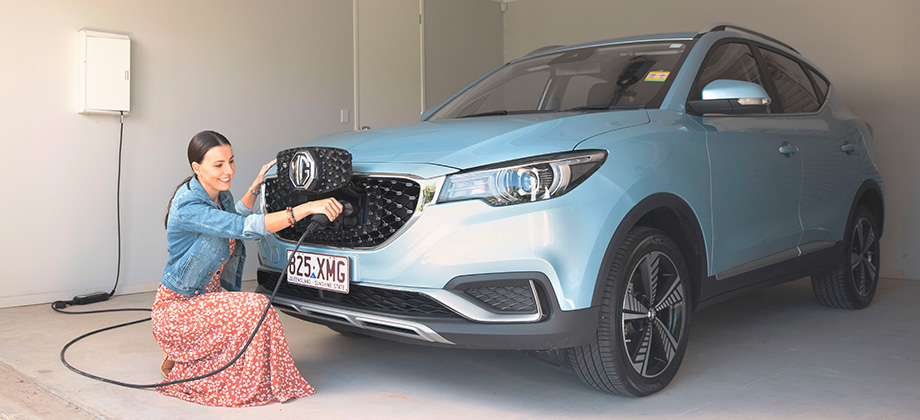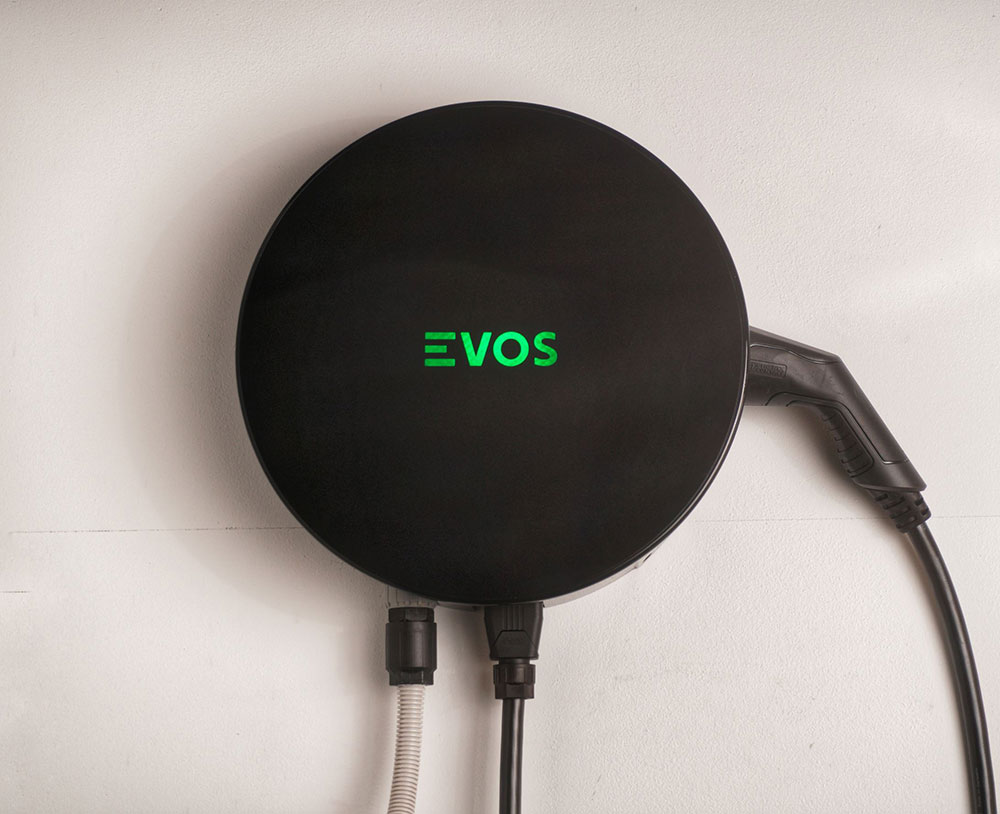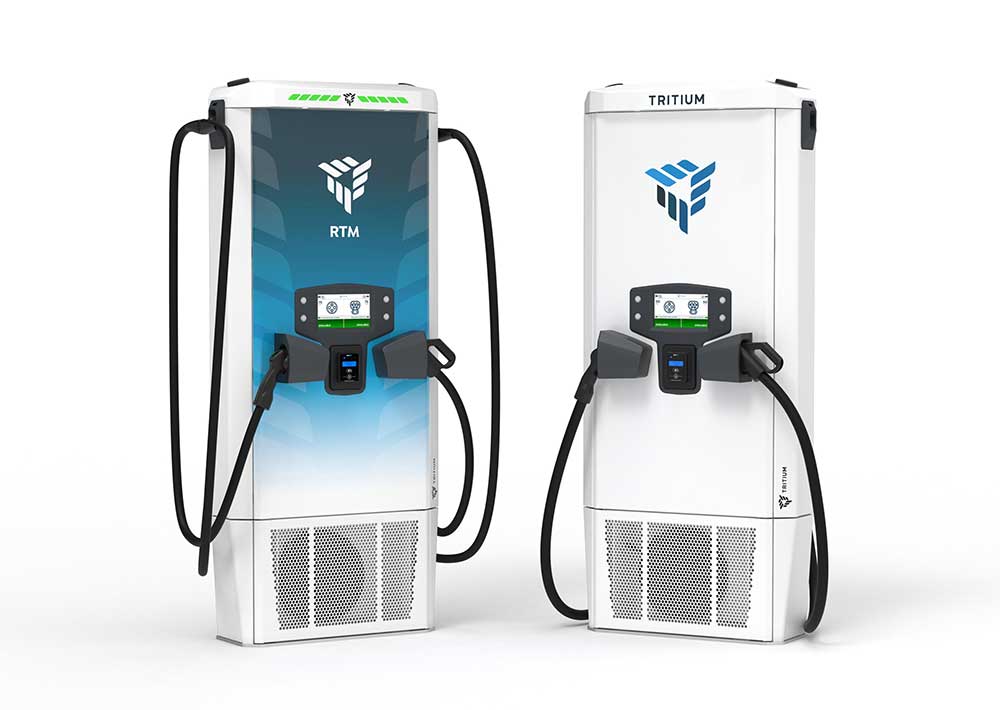Charging an electric car
Electric car charging is as easy as filling up your tank with petrol once you know how to do it. In much the same way that service stations provide different types of fuel for different cars, EV charging stations provide different levels of charging for different electric cars. How you’ll charge your electric car will depend on:
- The type and model of electric car you have
- The charging level you have access to
- The type of EV connector you buy for your electric car
EV charging levels explained
Level 1 EV charging
This is the level that portable electric vehicle chargers (called Electric Vehicle Supply Equipment or EVSE), are capable of. EVSEs can be plugged into a standard household power socket, but they take hours and sometimes days to fully charge a vehicle (depending on its battery size). As Level 1 is the slowest of all EV charging levels, EVSE charging is suitable for:
- Topping up the plug-in hybrids (PHEV), which have smaller batteries
- Charging your car at work to drive home
- Emergency charging when you’re not near a more powerful EV charging station
Level 2 EV charging
This the charging level you’ll achieve if your electric vehicle is plugged into a wall box that connects it to the electrical network via specific socket, plug, and dedicated circuit. Level 2 EV charging is much faster than Level 1 charging because the wall box allows it to be done at a higher voltage and amperage. Level 2 wall box charging is suitable for:
- Topping up your electric vehicle for a few hours at a shopping centre
- Fully charging your electric vehicle overnight
Level 3 EV charging
This is the charging level that you can only expect to get from dedicated high-power EV charging stations. Level 3 charging uses direct current (DC) technology and can be more than 10 times faster than Level 2 charging. As Level 3 offers such fast charging, it is suitable for:
- Topping up your charge in the same way you'd top up your petrol
- Charging between legs of long-distance journeys
| Power source | Charging speed | Uses | |
|---|---|---|---|
| Level 1 EV charging |
Standard power socket (AC) |
Slow (up to 2.3kW) |
|
| Level 2 EV charging |
Wall box connected to a standard power socket (AC) |
Fast (up to 22kW) |
|
| Level 3 EV charging |
Dedicated high-power EV charging stations (DC) |
Ultra-rapid (up to 350kW) |
|
Electric vehicle charging connectors explained
EV charging connectors are the plugs you put into an EV charging station’s outlet. They are similar to phone chargers in that the type of connector that your car uses depends on:
- The car’s manufacturer
- The region it is manufactured
- Make and model of the car
- In Australia, the four most popular EV connectors are: Type 2, CHAdeMO, Tesla and Type 1.
Type 2 connectors
This is the standard European connector, which most Australian electric cars also use. It has a seven-pin top connector for Level 1 and 2 charging, and a three-pin top port that combines with a dual-prong for Level 3 charging. It can charge electric cars at up to 22.1kW (AC) and 350kW (DC).
CHAdeMO connectors
This DC-only connector is used by Japanese manufacturers, including Nissan, Mitsubishi, Subaru, Honda, and Toyota. It is bidirectional, which means it can take power out of a network and put power back into a network. It can only be used at Level 3 charging stations and can charge cars at up to 400kW (DC).
Tesla connector
The Tesla connector and the port it plugs in to both look the same as a Type 2 connector. However, Tesla charging stations use software that stops other types of electric cars charging from them. So, while cars with a Tesla connector can use Type 2 outlets, other cars with Type 2 connectors cannot use Tesla outlets. Tesla connectors can be used at Level 1, 2 and 3 charging stations. They can charge Teslas at up to 22kW (AC) and 250kW (DC).
Type 1 connector
This is the standard American connector, but it is rarely used in Australia. Only older electric cars use this connector. In Australia, Type 1 connectors can only be plugged into Level 1 and 2 charging stations and can only charge electric cars at up to 7.2kW (AC)
| Bidirectional | Maximum AC charging |
Maximum DC charging |
Charging level compatibility |
|
|---|---|---|---|---|
| Type 2 connector |
No |
22.1kW |
350kW |
Levels 1, 2, 3 |
| CHAdeMO connector |
Yes | n/a |
400kW |
Level 3 |
| Tesla connector |
No |
22kW |
250kW |
Level 1, 2, 3 |
| Type 1 connector | No |
7.2kW |
n/a |
Levels 1, 2 |
Which connectors do electric cars come with?
Electric cars often come with just a Level 1 charging cable that can be plugged into a standard household power socket. You can, however, purchase connectors, adapters and converters that will allow you to plug in to a range of different public EV charging stations.
Learn more about charging electric vehicles
Charge your EV with RACQ
Your electric car questions answered
Other products and services for electric cars
Switching to an electric car? We’ve evolved our products and services to make buying and protecting your electric vehicle easy.
Things to note
Banking and loan products issued by Members Banking Group Limited ABN 83 087 651 054 AFSL/Australian credit licence 241195 trading as RACQ Bank. Terms, conditions, fees, charges and lending policies apply. This is general advice only and may not be right for you. This information does not take your personal objectives, circumstances or needs into account. Read the disclosure documents for your selected product or service, including the Financial Services Guide and the Terms and Conditions, and consider if appropriate for you before deciding.
Except for RACQ Bank, any RACQ entity referred to on this page is not an authorised deposit-taking institution for the purposes of the Banking Act 1959 (Cth). That entity’s obligations do not represent deposits or other liabilities of RACQ Bank. RACQ Bank does not guarantee or otherwise provide assurance in respect of the obligations of that entity, unless noted otherwise.
RACQ Bank subscribes to the Customer Owned Banking Code of Practice which establishes higher standards than the law requires. The Code reflects modern consumer expectations and developments in approaches to issues such as consumer vulnerability, guarantors, and supporting customers through financial hardship. Please read our Customer Owned Banking Code of Practice page for more information.
Insurance Products (excluding Travel Insurance) are issued by RACQ Insurance Limited ABN 50 009 704 152 (RACQI) and arranged by its agent, RACQ Distribution Services Pty Ltd (RDS) ABN 35 116 361 650, AFSL 567130 and RDS' authorised representatives (including RACQ Operations Pty Ltd ABN 80 009 663 414, AR No. 234978 (RACQO). Conditions, limits and exclusions apply. RDS and RACQO are in the RACQ group of companies. One of the companies in the RACQ group of companies has a minority shareholding in RACQI.
RDS and RACQO have not taken your personal objectives, circumstances or needs into account when preparing advice regarding insurance products and you will need to consider whether the advice is appropriate for you. Read the Product Disclosure Statement (PDS) and any applicable Supplementary PDS before making a purchase decision on this product. You can also access our Target Market Determinations on this website. RDS receives a commission from RACQI for the policies it arranges. RACQO receives fees paid for services it provides to RDS. Further details about remuneration are available on request prior to purchasing.
~~ Terms and conditions apply to all offers. View the individual offer for full details. Offer is subject to availability and may be withdrawn at any time without notice.
^The Green Car Loan is available for new lending only to purchase a plug-in electric car up to 12 months old.
*Conditions, limits and exclusions apply. Visit racq.com/roadside for details.
Terms, conditions and exclusions apply. See racq.com.au/car/roadside-assistance/roadside-terms-and-conditions for details.

.jpg?h=667&iar=0&w=1000&rev=d12aa0776637486ea5f9cdf124686285&hash=800E068067CE9AEDC3A014383772BAAA)

